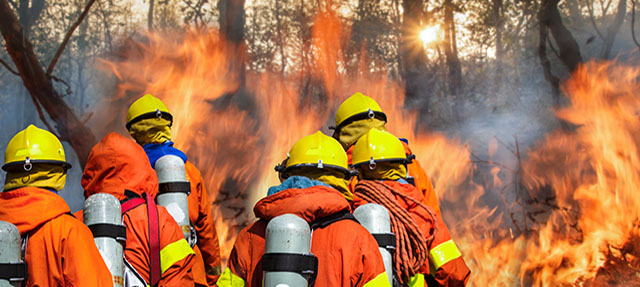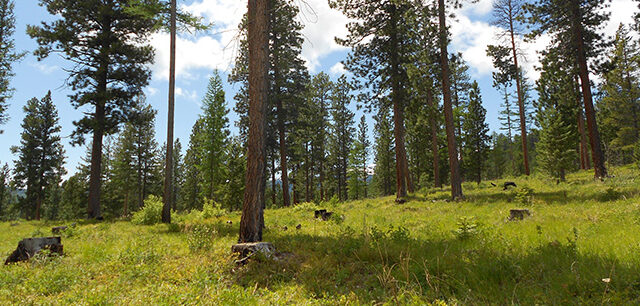A new report on the benefits of managing headwater forests to reduce wildfire risks is available here. Join us on April 30 for an online event featuring a panel of experts discussing this topic.
California has experienced catastrophic wildfires and widespread tree death in recent years that have accelerated its efforts to reduce wildfire threats to communities and improve forest health. Fortunately, the COVID-19 pandemic is not deterring these efforts—though it could complicate the work. Activities must be carried out in ways that limit the risk of infection to workers, which can be difficult when managing fire and working with ground crews over days or weeks. Here we explore the impact of the pandemic on wildfire risk reduction.
Could COVID-19 affect the state’s ability to respond to wildfires this year?
Fighting wildfires is an essential service and the state’s ability to respond to wildfires this year will not be compromised by the pandemic. The California Department of Forestry and Fire Protection (CAL FIRE), the agency responsible for the bulk of the state’s wildfire response, is gearing up for the season by hiring seasonal staff and training crews for the fire line.
“Our staffing levels will be the same as last year to meet the demands of the upcoming wildfire season,” said CAL FIRE communication officer Christine McMorrow. To prevent firefighters from contracting and spreading the virus, CAL FIRE is integrating social distancing guidelines into training exercises. The agency is also considering options for making fire camps—where firefighters eat and sleep while battling blazes—less conducive to virus spread.
Could it affect vegetation management efforts?
Most vegetation management efforts have been designated as essential services and are expected to continue throughout the pandemic. Over the past year, private landowners, nonprofit organizations, local governments, water and electric utilities, CAL FIRE, and federal agencies did significant vegetation management in preparation for the upcoming wildfire season. Work on private, local government, and state lands is largely continuing as planned. Implementing entities are encouraging social distancing measures to protect crews from infection.
“We haven’t heard of major setbacks to forest health projects yet, but it is still early,” said Brittany Covich, policy and outreach manager for the Sierra Nevada Conservancy, a state partner on many forest health projects in the region.
One major exception is national forests, which account for more than half of Sierra Nevada forestlands. On March 20, burns were suspended by the US Forest Service to avoid the spread of smoke (which can increase virus risk in nearby communities) and prevent crews from contracting and spreading the virus.
What are the potential long-term implications of the pandemic for forest management?
The economic fallout from the pandemic is forcing the state to reassess its spending priorities. This is generating uncertainty for many programs, including wildfire risk reduction. Spending in this area is one of three priorities for this year. However, it is not clear how much funding will be available for specific programs. In January, the Governor’s proposed budget included $165 million in state Greenhouse Gas Reduction Fund (GGRF) money and an additional $250 million in funding for forest health projects from a Climate Resilience Bond intended for the November 2020 ballot.
Potential recipients of forest health funds are cautiously optimistic that some GGRF funds will remain on the table, but it remains to be seen whether the legislature and voters will be willing approve new bonds in the future.
The financial condition of state partners in fire prevention and forest health—including nonprofit organizations, local governments, and the US Forest Service—is also uncertain. “Frankly, we’re all in a wait-and-see mode, but we’re hopeful that forest management will remain a high priority,” said Covich.





